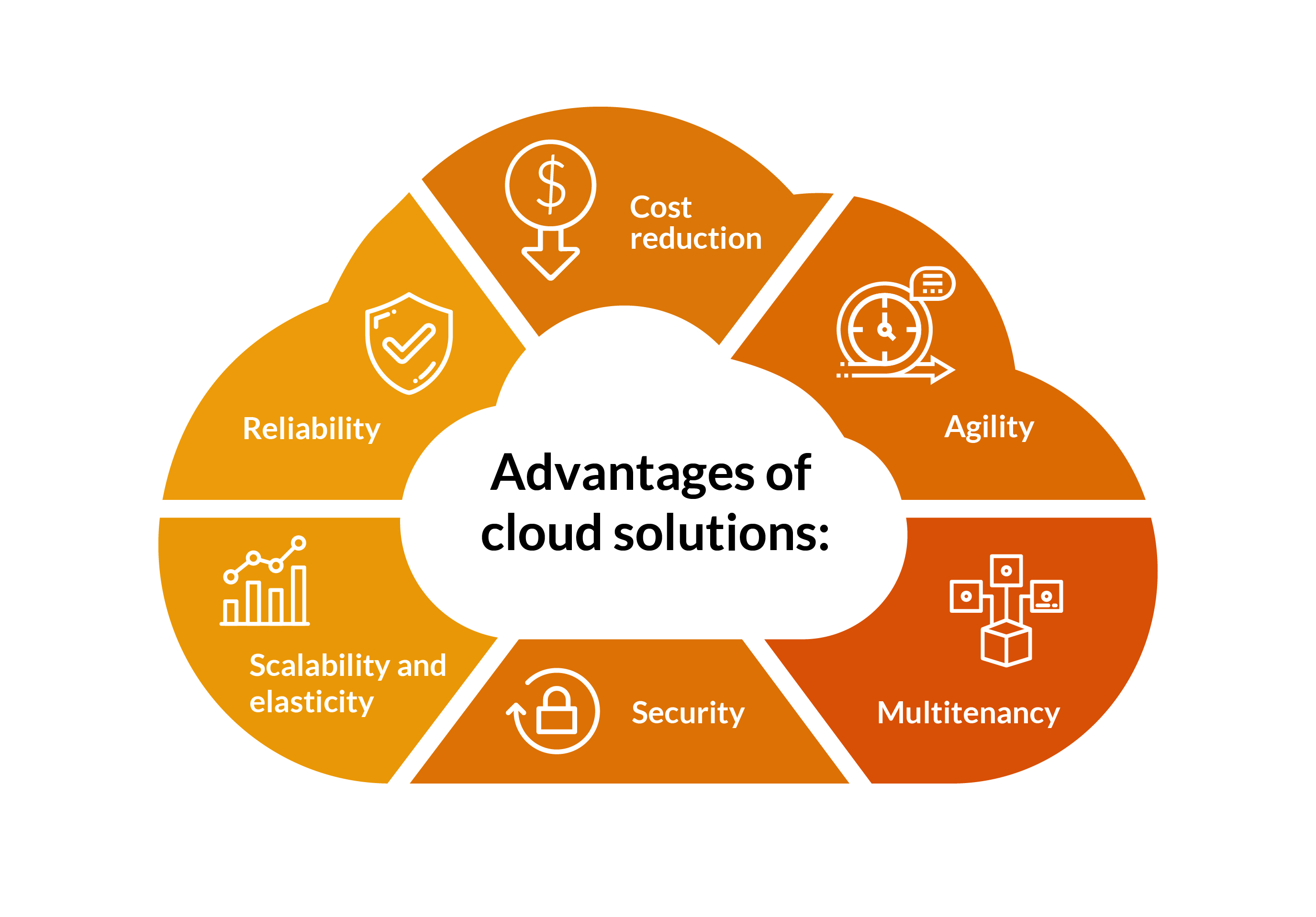Streamline Procedures With Robust Cloud Services
Welcoming robust cloud solutions provides a critical chance for companies to enhance their procedures and remain ahead of the contour. By taking advantage of the power of cloud remedies, services can attain a degree of operational dexterity that is essential for sustained development and competition in the digital age.
Benefits of Cloud Provider
Cloud solutions provide various advantages to individuals and services looking for flexible and reliable solutions for information storage space and administration. One essential benefit is the scalability that cloud solutions offer, enabling customers to easily change their storage and computer needs as their needs progress. This adaptability makes it possible for companies to scale up during peak times and reduce during slower periods, optimizing sources and costs.
In addition, cloud solutions offer boosted availability to applications and information. Individuals can access their information from anywhere with an internet connection, promoting cooperation among team members working remotely or in different areas. universal cloud Service. This ease of access likewise improves productivity by allowing smooth job processes without being tied to a specific physical place
In addition, cloud services commonly include automated updates and maintenance, reducing the worry on IT departments and guaranteeing that systems are updated and protected. This proactive method to maintenance aids services stay competitive and safe in an ever-evolving technical landscape. Generally, the benefits of cloud solutions make them a useful asset for companies looking to improve operations and enhance performance.

Enhanced Data Safety Measures
Executing durable security procedures and gain access to controls is necessary for making sure data safety and security in cloud services. By securing information both en route and at rest, companies can shield sensitive information from unapproved accessibility. Gain access to controls aid limit who can watch, modify, or delete data, including an extra layer of safety and security. Multi-factor authentication better improves data defense by needing additional confirmation actions past a password.
Normal safety and security audits and surveillance are important to identifying and attending to prospective vulnerabilities immediately. By continuously checking for unusual tasks, companies can react and detect to safety threats in real-time, lowering the risk of data violations. Information loss avoidance tools can likewise aid avoid harmful or unintended information leakages by keeping track of and blocking delicate details from being shared outside the organization.
Training workers on ideal safety techniques is vital in preserving information safety. Cloud Services. Informing personnel on just how to identify phishing efforts, creating solid passwords, and safely managing information can significantly lower the possibility of safety cases. In general, a comprehensive method that integrates file encryption, accessibility controls, monitoring, and employee training is essential to enhancing data safety and security in cloud services
Scalability and Flexibility Solutions
To meet the needs of advancing organization requirements, companies are significantly looking for adaptable and scalable solutions within their cloud services framework. Scalability and adaptability are critical parts that allow services to adapt to changing needs effectively. Cloud solutions supply the benefit of quickly scaling resources up or down based upon need, enabling companies to maximize performance and cost-effectiveness.
One key solution for scalability is making use of auto-scaling abilities, where cloud resources instantly get used to meet fluctuating work. This makes sure that organizations can keep constant performance without over-provisioning sources. Additionally, cloud solutions supply flexibility by supplying a vast his comment is here array of solutions and implementation alternatives, allowing organizations to tailor their infrastructure to certain needs. This adaptability allows companies to try out different configurations and innovations to find the ideal arrangement for their operations.
Cost-Effectiveness and Resource Optimization
Attaining cost-effectiveness and optimizing resources are extremely important considerations for organizations when managing their cloud services infrastructure. Cloud solutions supply the advantage of cost versatility, enabling companies to pay just for the sources they make use of, which can cause substantial cost savings compared to conventional on-premises remedies. By leveraging cloud services, organizations can optimize their resource allocation, scaling up or down based on demand to avoid unneeded and over-provisioning costs. Furthermore, cloud suppliers usually offer various rates versions, such as reserved or pay-as-you-go instances, enabling companies to pick one of the most cost-efficient alternative based upon their usage patterns.
Resource optimization in the cloud entails successfully using computing power, storage space, and networking abilities to satisfy performance needs without overspending on unnecessary sources. Carrying out automation tools and checking systems can assist organizations track source usage in real-time, identify inefficiencies, and make adjustments to enhance operations and reduce expenses. By continuously maximizing resources and surveillance expenses, companies can ensure they are taking full advantage of the cost-effectiveness of their cloud services facilities while maintaining high efficiency levels.
Combination Techniques for Seamless Operations
In order to make certain smooth and efficient procedures, companies have to purposefully apply and intend assimilation approaches for their cloud services infrastructure. APIs enable the sharing of data and capabilities in between applications, advertising interoperability and improving processes.
Moreover, adopting middleware options can aid bridge the void between diverse systems by working as an interaction layer that facilitates information exchange and synchronization. This middleware layer can enhance connection and allow real-time data flow in between data sources, applications, and devices. In addition, leveraging combination platforms as a service (iPaaS) can streamline the Discover More integration procedure by supplying pre-built connectors and devices for integrating cloud solutions with on-premises systems.
Conclusion
Finally, leveraging robust cloud solutions uses organizations countless benefits such as boosted data security, scalability, cost-effectiveness, and seamless combination techniques. By maximizing effectiveness and performance, companies can adjust resources to fulfill changing demands and drive total success. With streamlined procedures and boosted operational dexterity, organizations can successfully navigate the ever-changing service landscape and stay affordable in today's digital age.
Cloud solutions offer the benefit of conveniently scaling this hyperlink resources up or down based on need, permitting companies to optimize performance and cost-effectiveness.
In addition, cloud solutions offer adaptability by offering a broad array of services and implementation choices, allowing businesses to customize their facilities to particular requirements. By continually maximizing resources and monitoring costs, companies can guarantee they are maximizing the cost-effectiveness of their cloud services facilities while preserving high efficiency degrees.
In addition, leveraging integration platforms as a service (iPaaS) can simplify the combination process by supplying pre-built ports and devices for integrating cloud services with on-premises systems.
